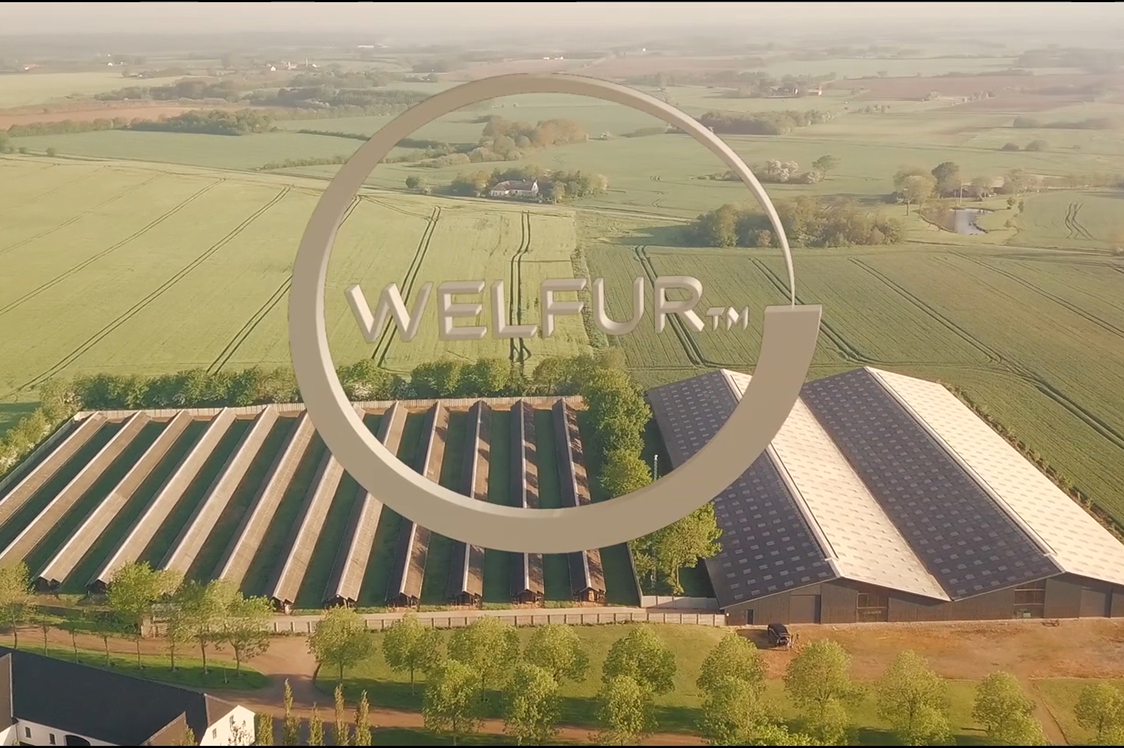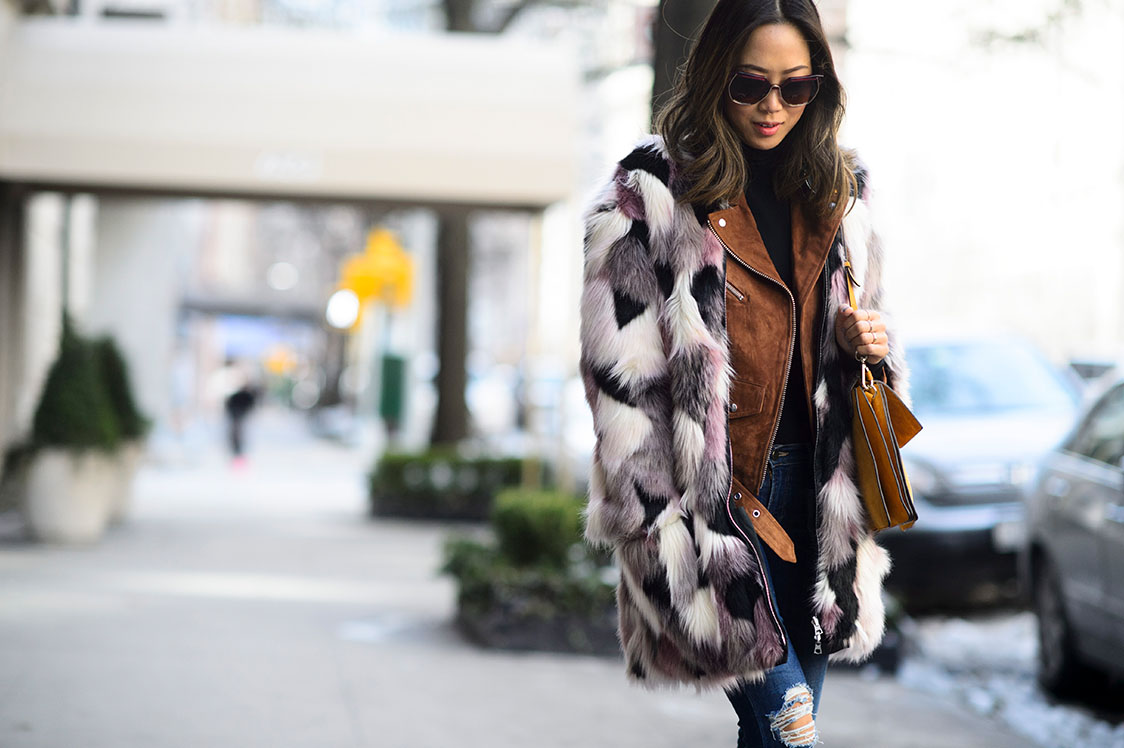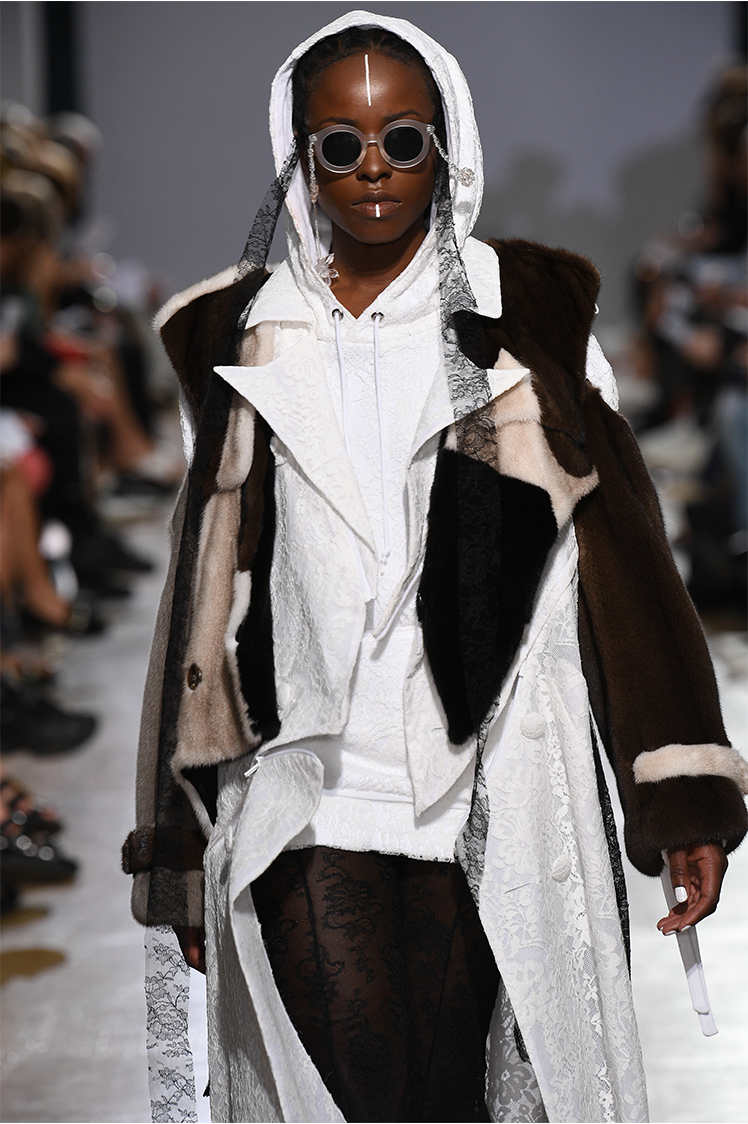NEWSLETTER
1667

Video: How We Ensure Good Animal Welfare with WelFur
Sep 09, 2019
by Vladislava Gospodinova
Responding to consumer's demand for more traceability, the European fur sector pioneered <strong><a href="https://www.sustainablefur.com/animal-welfare/" target="_blank" rel="noopener noreferrer">a new, modern standard for animal welfare in fur farmed species</a></strong>. WelFur is developed by independent scientists from seven European universities. The animal welfare assessment system works on the principles of the <strong><a href="http://www.welfarequality.net/en-us/home/" target="_blank" rel="noopener noreferrer">European Commission's Welfare Quality programme</a></strong>.
Earlier this year, the <a href="https://www.eesc.europa.eu/en/policies/policy-areas/enterprise/database-self-and-co-regulation-initiatives/146" target="_blank" rel="noopener noreferrer"><strong>European Commission endorsed WelFur as a Self-Regulation and Co-Regulation Initiative</strong></a>, making it the first animal welfare programme in history to be promoted in the Commission’s database of so-called ‘soft law’ initiatives.
Recently the international<a href="https://www.sustainablefur.com/news_item/welfur-meets-animal-welfare-standards-of-kering-group/" target="_blank" rel="noopener noreferrer"> <strong>luxury group Kering included WelFur in ‘Kering Animal Welfare Standard’</strong></a> report describing <a href="https://keringcorporate.dam.kering.com/m/ead2a47a3ee2799/original/Kering-Animal-Welfare-Standards.pdf" target="_blank" rel="noopener noreferrer"><strong>it as a credible animal welfare programme and certification</strong></a>.
Find out how WelFur ensures better welfare for the animals and provides transparency for the consumers by watching the video below:
<iframe src="https://www.youtube.com/embed/cHslKxnmDzg" width="560" height="315" frameborder="0" allowfullscreen="allowfullscreen"></iframe>
Read more about the fur sector's focus on <strong><a href="https://www.sustainablefur.com/animal-welfare/" target="_blank" rel="noopener noreferrer">animal welfare here</a></strong>.
Other Stories In This Issue
1654

WelFur meets animal welfare standards of Kering Group
Sep 07, 2019
by Mick Madsen
International luxury group Kering, who amongst its brands counts Gucci, Yves Saint Lauren and Alexander McQueen have published their animal welfare standards earlier this year. The European fur sector’s <strong><a href="https://www.sustainablefur.com/animal-welfare/" target="_blank" rel="noopener noreferrer">science-based animal welfare programme WelFur</a></strong> is highlighted in the report as it meets the <strong><a href="https://keringcorporate.dam.kering.com/m/ead2a47a3ee2799/original/Kering-Animal-Welfare-Standards.pdf">‘Kering Animal Welfare Standard’</a></strong> for farmed fur.
In addition to farmed fur, the Kering animal welfare standards apply to raw materials sourced from cattle, calves, goats, sheep, ostrich, crocodiles, alligators and python.
"Improving the welfare of animals must be an imperative for our industry and Kering wants to amplify the focus of attention from a few species to all of the animals, including livestock, within fashion’s global supply chains. We hope for widespread adoption of the standards through collaborating with our suppliers, our peers in luxury, the fashion industry at large, and with the food sector, in these shared supply chains to ultimately shift how we, as a society, treat animals and nature," said Marie-Claire Daveu, Chief Sustainability Officer and Head of International institutional affairs, Kering.
CEO of Fur Europe Mette Lykke Nielsen thinks the development within Kering is positive.
"I can only applaud Kering for putting forward strict animal welfare demands to suppliers of natural fibres from animals. When WelFur was initiated it was exactly with the purpose to document the good animal welfare on European fur farms. Because of Kering's animal welfare initiative, we have worked with them professionally for a while, so I know from experience they do not take these things lightly," she said.
1655

Eco-conscious London designer takes on fur
Sep 05, 2019
by Vladislava Gospodinova
"I have always been sceptical about working with fur, especially since I am from Great Britain, and there have been many scare campaigns growing up in the past."
The words of the young London-based designer Tesfa Joseph sum up a quite common perception about fur in the UK. Then he came across something unexpected which changed his mind: Eco-conscious Tesfa was introduced to a 100-years old fur coat in a vintage store in Denmark by his partner Tommy-Louis Julius Funch Kraglund.
"It came as a huge surprise to me because the fur coat looked as good as new, and only the design was telling the real age of the coat. I was astonished by what fur can do and how long it can last being passed <a href="https://www.sustainablefur.com/natural/" target="_blank" rel="noopener noreferrer"><strong>from generation to generation</strong></a>."
An ambassador of sustainability, Tommy-Louis Julius Funch Kraglund is no stranger to the damaging impact the fashion industry causes to the environment. A knowledge he thinks it is worth sharing, especially with those working in fashion.
"If we want to pass on the world to our children in a better condition than we got it, we need to take action. To treat nature, the animals and the workers around the globe with respect."
Impressed by what he saw in the vintage shop and with many questions, Tesfa wanted answers – where does fur comes from; how does the supply chain work?
"I decided to see if it was true if the animals got treated nicely and how the production works. When the collaboration with <strong><a href="http://www.kopenhagenfur.com">Kopenhagen Fur</a></strong> started, I got more than a positive surprise from the industry. I began to feel it makes more sense to wear something from nature rather than something made of plastic by workers who are not treated well."
Keen to tell what he had seen, Tesfa made a bold move. <strong><a href="https://www.arts.ac.uk/colleges/central-saint-martins/stories/ba-fashion-show-2019-in-pictures" target="_blank" rel="noopener noreferrer">As one of the 14 graduates selected to show their designs at Central Saint Martins’ press show for BA Womenswear, he wanted to present a fur collection</a></strong>.
"A few people were sceptical about me wanting to use fur at the beginning. They said it might affect my chances of getting into the press show if I decided to go that route." He adds:
"It was a euphoric moment seeing almost a years’ worth of hard work come to a climax on the runway. For both of us, we didn't expect the collection to be received so well; it was indeed a humbling experience.
Now teamed up, Tesfa and Tommy are launching their own fashion brand Burchi hoping they could help to bring about change in fashion production.
"Many other designers have great ideas, which is an important part of the design, but design and creation is not everything. The fashion we see today needs to reflect the tendencies of the times we live in, which is why our focus on transparency as a brand will make us stand out."
1646

Climate change a top priority for new European Commission
Aug 23, 2019
by Mick Madsen
"The message from Europe’s voters – and those too young to vote – is loud and clear: they want real action on climate change and they want Europe to lead the way."
On this note new EU Commission President Ursula von der Leyen went on to promise the proposal of a European Green Deal, the ambition to become the world’s first climate-neutral continent by 2050. This happened in the German politician’s guideline for the next European Commission – a Commission that will have ‘environment’ written all over it, although the final working programme for the new commission has yet to be published.
The new Commission’s work on climate change is primarily comprehended in two policies: a new strategy for on biodiversity for 2030, and a new circular economy action plan building on work already laid out by the previous Commission. While it is already clear that this work will focus on the promotion of reuse, repair and remanufacturing of materials, Ursula von der Leyen renewed the focus on polluting fashion textiles in her guidelines for the new European Commission:
"I will propose a new Circular Economy Action Plan focusing on sustainable resource use, especially resource-intensive and high-impact sectors such as textiles and construction." It is within Ursula von der Leyen’s vision that a European Green Deal will open up opportunities, and create a competitive edge to Europe’s industries, a view backed by Fur Europe’s CEO Mette Lykke Nielsen.
"There is no doubt the climate change debate is an opportunity for the fur industry. A few years ago climate change was a fringe issue at best. Today, both public and political attention has snowballed climate change into being the number one issue on the global agenda. All of a sudden it becomes common knowledge that fake fur coats, which releases microplastics into our oceans and waterways, is not the ethical alternative it was once promoted as, while<strong> <a href="https://www.sustainablefur.com/natural/#fur-in-the-circular-economy" target="_blank" rel="noopener noreferrer">natural, biodegradable textiles like fur become prototypes for the new, circular economy</a></strong>. The number of eco-conscious consumers is on the rise, and they represent an opportunity for the fur sector," she says.
However, the new winds flying over Europe are not without challenges to the fur sector either. <strong><a href="https://www.sustainablefur.com/environment/" target="_blank" rel="noopener noreferrer">Fur Europe has mapped the sector’s environmental footprint for the past 18 months</a></strong>, and the coming years will be used to find out how the sector can improve its environmental impact in every part of the value chain.